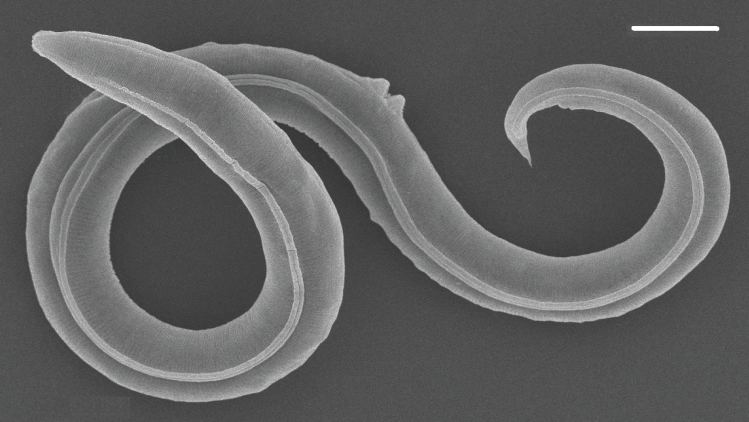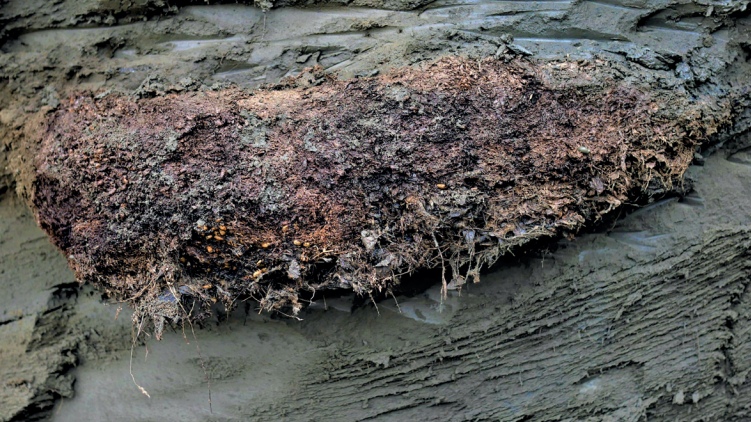Nematode resurrected from Siberian permafrost lay dormant for 46,000 years
The ancient nematode has lain dormant in a fossilized squirrel burrow since the late Pleistocene, revealing that these worms can survive for tens of thousands of years longer than thought.

A microscopic worm survived in the Siberian permafrost for a record-breaking 46,000 years, scientists have discovered — tens of thousands of years longer than previously resurrected worms.
The ancient roundworm, or nematode, belongs to the newly described species Panagrolaimus kolymaensis. Researchers discovered it nestled inside a fossilized squirrel burrow that was extracted from permafrost near the Kolyma River, in the northeastern Arctic, in 2002. Scientists resuscitated the frozen nematode in 2018, but its age and species remained unclear.
Now, a study published Thursday (July 27) in the journal PLOS Genetics may have found answers to these questions. "Survival in extreme environments for prolonged periods is a challenge that only a few organisms are capable of," researchers wrote in the study. "Here, we show that a soil nematode Panagrolaimus kolymaensis suspended life for 46,000 years in the Siberian permafrost."
Organisms such as nematodes and tardigrades can enter a dormant state — a metabolic process known as "cryptobiosis" — in response to being frozen or extremely dehydrated, intermediary states known as cryobiosis and anhydrobiosis, respectively. In both cases, the critters reduce their oxygen consumption and the amount of heat produced by metabolic processes to undetectable levels.
Related: 'Prehistoric' mummified bear discovered in Siberian permafrost isn't what we thought
The newly described nematode entered cryptobiosis in the late Pleistocene (2.6 million to 11,700 years ago), an epoch that included that last ice age. The permafrost that imprisoned the tiny creature had not thawed since then, meaning this is the longest recorded cryptobiosis in nematodes — by tens of thousands of years — according to the study. Until now, the Antarctic nematode species Plectus murrayi and a Tylenchus polyhypnus specimen held this record; the former was frozen in moss for 25.5 years and the latter was desiccated in a herbarium for 39 years.

The researchers analyzed the newly described nematode's genes and compared them to those of Caenorhabditis elegans roundworms, which were the first multicellular organisms to have their entire genome sequenced. In the absence of established genetic methods to study the recently thawed worm, C. elegans provided a well-studied model organism for comparison. The analysis revealed several shared genes linked to cryptobiosis.
Sign up for the Live Science daily newsletter now
Get the world’s most fascinating discoveries delivered straight to your inbox.
To find out exactly how nematodes can survive for such long periods, the researchers got a new group of P. kolymaensis and C. elegans worms and mildly desiccated them in the lab. As the worms entered anhydrobiosis, the team observed a spike in the production of a sugar called trehalose, which they think could help protect the nematodes' cell membranes from dehydration. They then froze the worms at minus 112 degrees Fahrenheit (minus 80 degrees Celsius) and found that desiccation improved the survival rates of both species. Worms that were frozen at this temperature without being dehydrated beforehand died instantly, according to the study.
Equipped with molecular pathways to cope with Arctic conditions, nematodes have evolved to survive in these hibernating states for many thousands of years, the researchers concluded. "Our findings indicate that by adapting to survive [in a] cryptobiotic state for short time frames in environments like permafrost, some nematode species gained the potential for individual worms to remain in the state for geological timeframes," they wrote in the study.
This means that extinct nematode species could be revived if they escape from the permafrost, the researchers noted. "Drastic changes" to the environment in which they lay dormant, including fluctuations in temperature and natural radioactivity, can wake ancient nematodes from their deep slumber, they added.

Sascha is a U.K.-based staff writer at Live Science. She holds a bachelor’s degree in biology from the University of Southampton in England and a master’s degree in science communication from Imperial College London. Her work has appeared in The Guardian and the health website Zoe. Besides writing, she enjoys playing tennis, bread-making and browsing second-hand shops for hidden gems.










